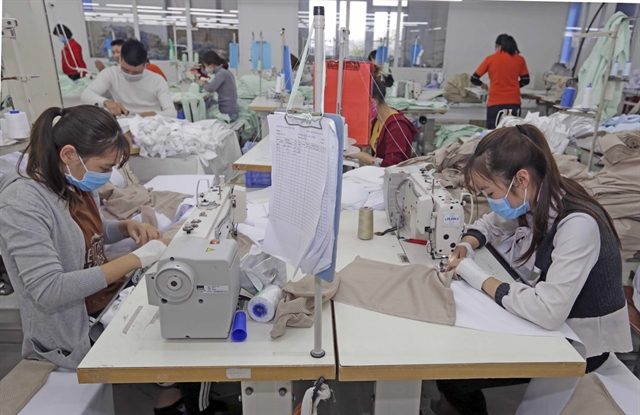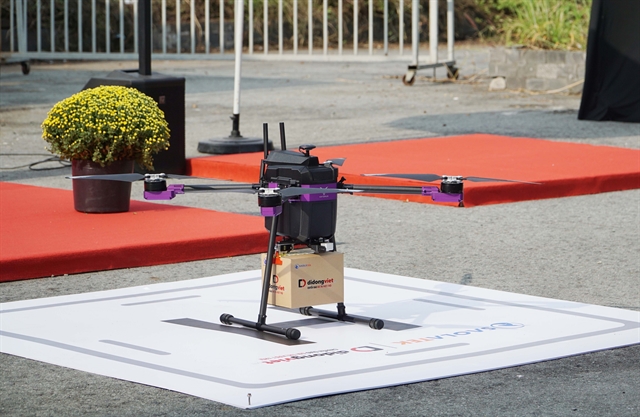 Economy
Economy

Apparel industry sees stable growth amid COVID-19 pandemic

|
| Workers make garment products for export at Hưng Việt Ltd., Co. in Hưng Yên Province. The textile and garment industry is expected to thrive this year, recording high export turnover. — VNA/VNS Photo Trần Việt |
HÀ NỘI — Despite the devastating impact of the COVID-19 pandemic, Việt Nam’s textile and garment industry has seen stable growth, recording an export turnover of US$8.84 billion in the first quarter of 2022 with an increase of 22.5 per cent against the same period last year.
In many industries, especially labour-intensive ones like the textile and garment industry, labour shortages during the COVID-19 pandemic have directly impacted apparel manufacturers' production and business activities.
Trần Tường Anh, deputy general director of Hòa Thọ Textile and Garment JSC, said early March this year, 1,719 employees in her company were tested positive for COVID-19, accounting for 15 per cent of the company’s total number of employees.
Having a large number of employees to take off from work, the company encountered many difficulties in arranging its production plans. In addition, after returning to work, their health remained poor, and they could not keep up with daily work, leading to low labour productivity. Therefore, the company must negotiate with customers to reschedule delivery times, rearrange production plans, and prioritise urgent orders first.
Employees who previously worked indirectly now have been directly involved in production. The company has also arranged different workplaces and canteen for those who tested positive for COVID-19 to work once health authorities approved it, said Tường Anh.
The Garment 10 Corporation has affiliates in many provinces and cities. During the pandemic, the company still maintained its production as many workers tested positive for COVID-19, said Bạch Thăng Long, the corporation's deputy director.
Meanwhile, 8-3 Textile Co. Ltd. struggled with labour shortages worsened by the crush of new COVID cases forcing many into isolation. However, the company’s board of directors were flexible in changing shifts and rotating workers to ensure production and business activities.
Over the past two years, particularly in the fourth wave of the pandemic, apparel companies have always faced difficulties due to disruption of the global supply chain, leading to a temporary closure of many companies.
Hoàng Văn Linh, chairman of Aligro JSC, said fabrics were based on the seasons. Therefore, his company prioritised garment orders and had enough raw materials.
To cope with uncertainty during the pandemic, the company determined to ensure social and welfare interests for employees to make them feel secure at work, said Linh.
A representative of Hòa Thọ Textile and Garment JSC said workers were required immediately to leave work for treatment if they were infected with COVID-19.
After recovering from illness and returning to work, employees were supported with finance and meals for two weeks.
To deal with labour shortages due to isolation, the company has also been flexible in changing shifts and rotating work to ensure stable production.
Việt Nam has changed its strategy from a Zero COVID policy to safe and flexible adaption and effective control of the COVID-19 pandemic while recovering and developing the economy.
Textile and garment manufacturers under the Vietnam National Textile and Garment Group have received orders until the end of the third quarter and the whole year, thanks to their flexible responses during a pandemic and the robust responses of relevant bodies.
The industry is expected to thrive and earn $43 billion in exports this year.
Manufacturers should seize opportunities and work with partners to tap into the growth potential of the world’s textile and garment market. — VNS




